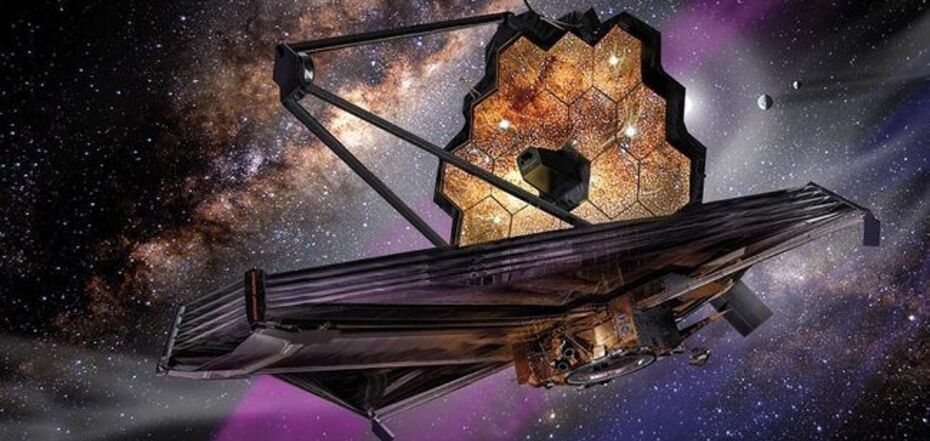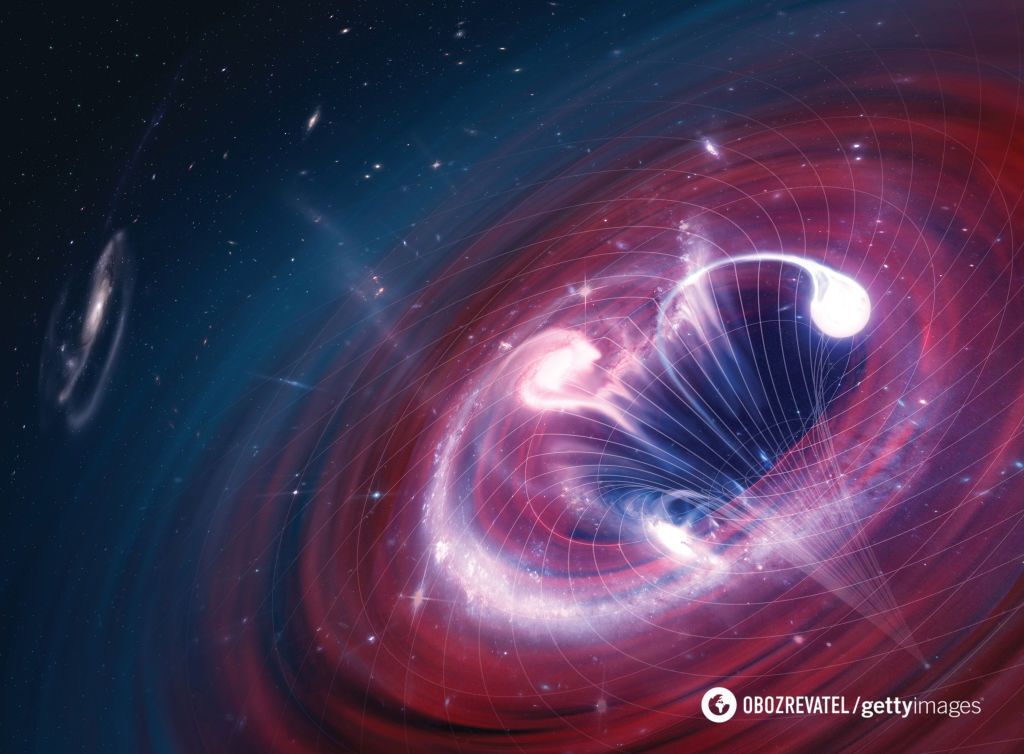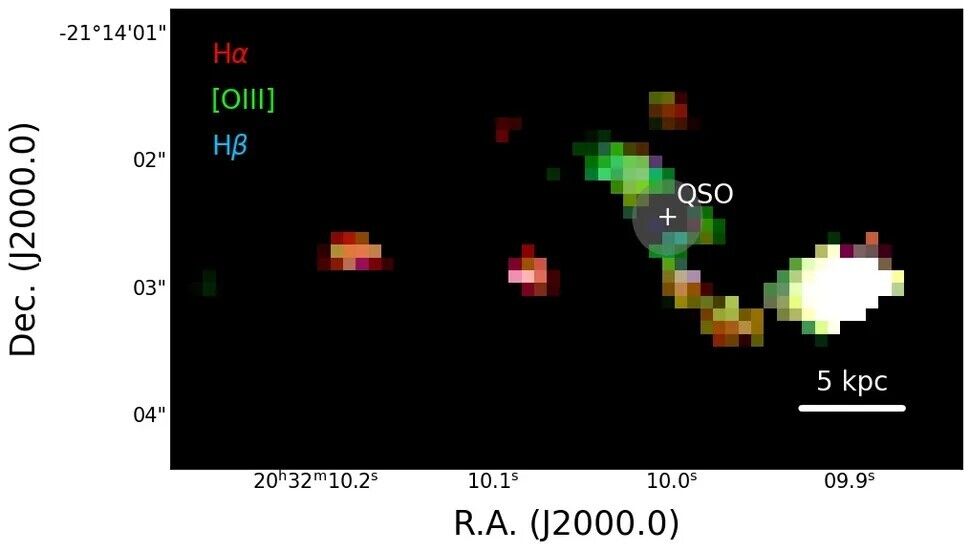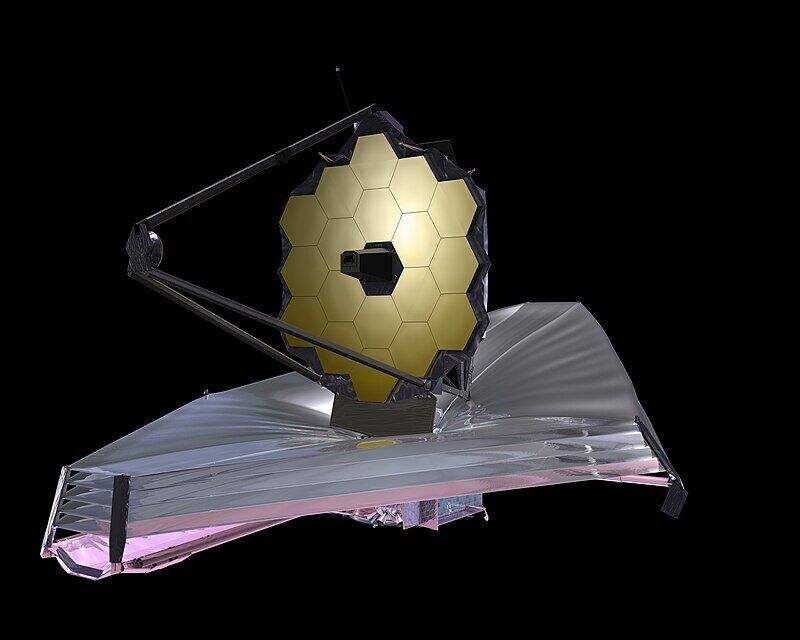News
The James Webb Space Telescope has captured the dance of a black hole with two companion galaxies. Photo
The ultra-powerful James Webb Space Telescope (JWST) has filmed the dramatic dance between a black hole-eating supermassive quasar and a galaxy merger less than a billion years after the Big Bang. The observations could help scientists better understand how galaxies and supermassive black holes grew in the early universe.
Not only did the team of scientists determine that the black hole has a mass equivalent to two billion suns, but they also found that both the quasar and the galaxies involved in this merger are highly evolved. This is a surprise, given that they existed when the 13.8-year-old cosmos was still an infant, LiveScience writes.
A detected supermassive black hole feeds on surrounding matter and powers a bright quasar that is so distant that the James Webb sees it as it was less than a billion years after the Big Bang. The quasar, named PJ308-21, is localized in an active galaxy AGN) in a galaxy in the process of merging with two massive companion galaxies.
The merger of these three galaxies is likely to deliver massive amounts of gas and dust to the supermassive black hole, fueling its growth and allowing it to continue to power PJ308-21.
"Our study shows that both the black holes at the center of high redshift quasars and their host galaxies undergo extremely efficient and rapid growth already in the first billion years of cosmic history. This is facilitated by the rich galactic environment in which these sources are formed," said the team leader, a researcher at the National Institutes of Health (NIH). ," said team leader Roberto Decarli, a researcher at the National Institute of Astrophysics (INAF) in Italy.
Decarli also added that this work was a real "emotional roller coaster" for the team, which developed innovative solutions to overcome initial difficulties with data reduction and create images with less than 1% uncertainty per pixel.
Scientists celebrate the excellent work of the James Webb Space Telescope.
"Thanks to JWST's near- and mid-infrared sensitivity, it is now possible to study the spectrum of quasars and satellite galaxies with unprecedented precision in the distant Universe. "Only the remarkable view offered by the James Webb Telescope can provide these observations," summarized team member and INAF astrophysicist Federica Loiacono.
Only verified information we have in Telegram-channel OBOZ.UA and Viber. Do not fall for fakes!






























